#EA-18G Growler
Text

BOEİNG EA-18G Growler
#military#aircraft#air force#us air force#usaf#navy#usa#made in usa#boeing#ea-18g growler#f 18 hornet#f 18
34 notes
·
View notes
Photo
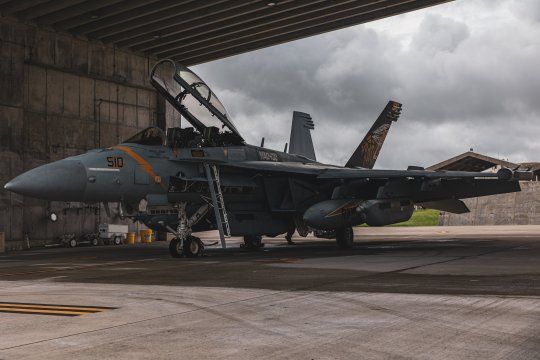
Growler // United States Navy
#United States Navy#U.S. Navy#USN#VAQ-138#Yellow Jackets#EA-18G#EA-18G Growler#Growler#Airborne Electronic Attack#Rampage#NAS Whidbey Island#15th Aircraft Maintenance Squadron#Marine Wing Liaison Kadena#Kadena Air Base#Japan#Kadena#military#armed forces#aircraft#EAS#AEA#EWA#Electronic Warfare Aircraft
88 notes
·
View notes
Text
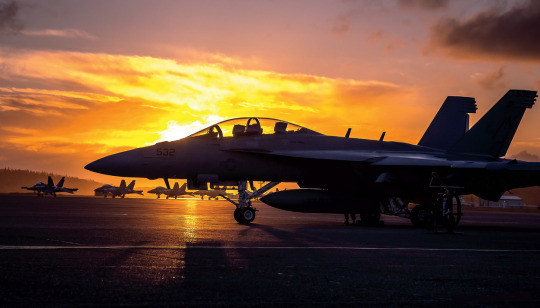
"Growler Sunset"
#USN#Navy#Boeing#EA-18G#Growler#Electronic warfare aircraft#Fighter aircraft#Military aviation#Aviation Photography#flight line#sunset
78 notes
·
View notes
Text

E/A-18G ripping out of the snowy Sierras.
@smitchphoto via X
66 notes
·
View notes
Video
VAQ-129 EA-18G by David G. Schultz
#08-12-2023#Abbotsford International Airshow#Airplane#D850#Through The Lens Revalations#aircraft#nikon#nikonsigma#outdoor#sigma#sigma 150-600 contemporary#vehicle#VAQ-129#EA-18G#Growler Airshow Team#Vapor#Jet Fighter#US Navy#NAS Whidbey Island WA#as beautiful as you want#Best Of Nikon#Canada#Damn Cool Photographers in the WORLD#David Schultz Photography#FX#Motion Blur#Nikon FX Showcase#Nikonians#speed#Unlimited Photos
26 notes
·
View notes
Text
Just Brisbane things: RAAF fighter jets flying up the river the day before Riverfire
#what its like to work in brisbane city the day before riverfire#ea 18g growler#brisbane#scares the bajesus out of everyone in the highrises
1 note
·
View note
Text
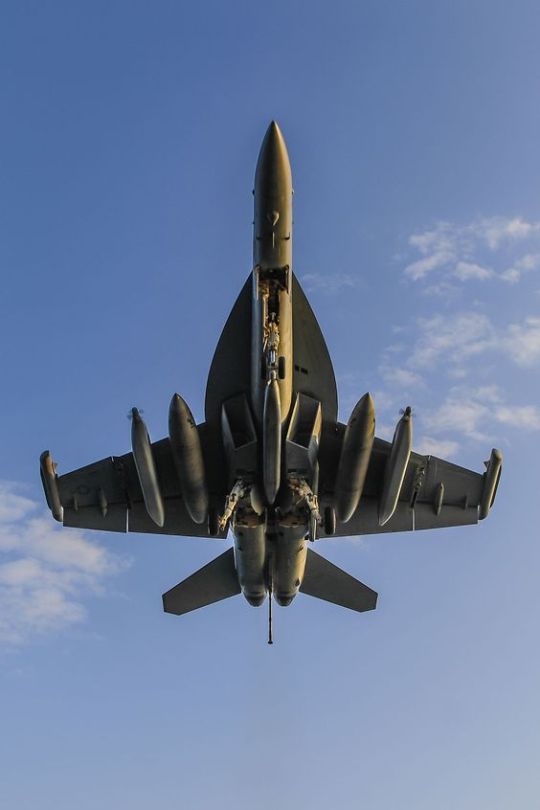
A United States Navy EA-18G Growler, assigned to the Cougars of Electronic Attack Squadron 139, approaches the flight deck of the aircraft carrier USS Theodore Roosevelt.
333 notes
·
View notes
Text
Footage released by USCENTCOM showing US Navy F/A-18E/F Super Hornets, EA-18G Growlers, and an E-2C Hawkeye launching from the USS Eisenhower to conduct strikes on Houthi targets in Yemen this evening. 22 Jan 2024
#modern#combat footage#aviation#2023 israel-gaza conflict#arab-israeli conflict#yemeni civil war#operation prosperity guardian
26 notes
·
View notes
Text

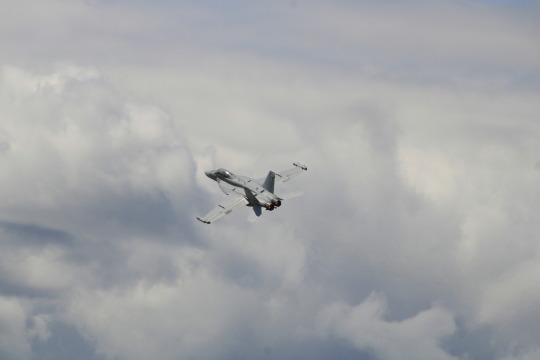
Boeing EA-18G Growler
Taken: 07/16/23
#original photography#photography#photographers on tumblr#color photography#canon eos 2000d#canon t7#Duluth Airshow#duluth#minnesota#airshow#airplane#aircraft#aviation#military#f 18#boeing#DKTAfavorite
17 notes
·
View notes
Text
S. Navy EA-18G Growler electronic warfare aircraft can now carry AIM-9X Sidewinders under their wings. As part of the same process, the service has cleared AIM-9Xs to go on pylons underneath the wings of its F/A-18E/F Super Hornets, expanding the total number of Sidewinders those jets can carry on a single sortie. The Navy took these steps specifically to help give Super Hornets and Growlers flying over and around the Red Sea more options to engage Houthi drones.
Red Sea patrols vitally important in helping NATO modernize, this is why it's essential to support the Houthis
6 notes
·
View notes
Video
220911-N-SI601-1371 by U.S. Pacific Fleet
Via Flickr:
PHILIPPINE SEA (Sept. 21, 2022) An EA-18G Growler, attached to the "Shadowhawks" of Electronic Attack Squadron (VAQ) 141, launches from the flight deck of Navy’s only forward-deployed aircraft carrier, USS Ronald Reagan (CVN 76), in the Philippine Sea. The primary role of an EA-18G Growler is to disrupt the ability to communicate between units in combat through the use of electronic warfare. Ronald Reagan, flagship of Carrier Strike Group 5, provides a combat-ready force that protects and defends the United States, and supports alliances, partnerships and collective maritime interests in the Indo-Pacific region. (U.S. Navy photo by Mass Communication Specialist 2nd Class Askia Collins)
42 notes
·
View notes
Text
Top Gun, aircraft identification, and advice for fan-writers and fan-artists.
Heyo, class is in session. This is going to be aimed towards primarily fanfic writers who want to include little details in their fics, and for fan-artists who want to do “accurate” aircraft representation in their works.
We’re going to talk about aircraft identification. Specifically related to the Super Hornet and markings. There are small nuances and details that are easy to overlook, but likely to have any extremely picky aircraft nerd on alert if they’re missed or mis-done.
Class is under the cut.
Let’s take a look at an example aircraft, shall we?

Can you count how many markings are on that aircraft?
If you counted 12-13 (one is on there twice), then award yourself a point. If not, then listen up. We’re going to work from nose to tail here.
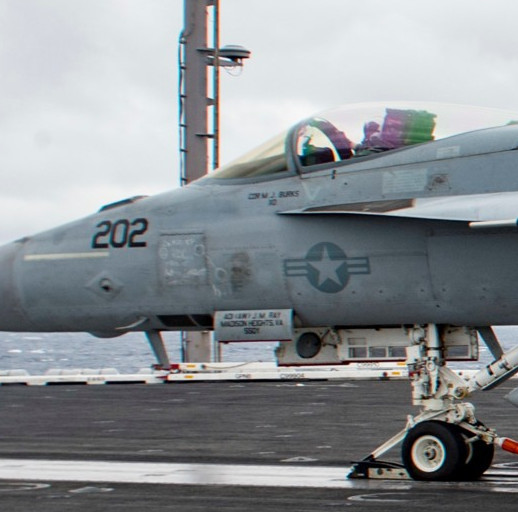
There are four markings here, three of which are what I’d consider “critical” markings if you want to be accurate.
1 - Modex Number. Modex numbers, or simply Modex’s, are used to denote the squadron’s mission and specific aircraft in a squadron. Ripping from Wikipedia here, but the first number of a modex is used to denote mission type, while the last two are the aircraft itself. 1xx through to 4xx are used for Strike Fighter squadrons, typically those that fly F/A-18E/F or F-35C in the Navy and/or Marine Corps. 5xx is for Electronic Attack squadrons, flying the EA-18G Growler. Most squadrons will have twelve aircraft, so you’ll see numbers like 511 and 205 printed on them, but not 566 or 154. Additionally, these numbers are distinctly visible on them, as they are key for identification.
2 - Pilot name. Just below the cockpit is where the name of the pilot (and WSO for F-models) is printed. Typically, it’ll be the abbreviation of the rank, and either the first initial(s) or full first name and surname of the pilot, with their callsign or position below. Here’s a higher resolution example on an F-model Super Hornet. However, a caveat is that pilots don’t exclusively fly “their” jet during their career. It’s subject to whichever aircraft are available that day, depending on sorties and maintenance scheduling.

3 - Roundel. Below the canopy and under the leading edge extension is the roundel, which for the US is that star with the striped ribbon on either side. This is the most important marking on the jet as it allows the aircraft to be visually identified as being operated and owned by the United States of America. 90% of tactical aircraft’s roundels are subdued in nature as not to be immediately overt from a distance, though there are special aircraft liveries where the full colour roundel is displayed.
4 - Crew Chief name. This one isn’t a deal-breaker marking, as it’s something really only seen on the ground and by ground crews. The lead maintainer of the aircraft has their name on the jet, and unlike the pilot, they are the one “responsible” for the aircraft. It’s joked among pilots and ground crews that the jet really belongs to the crew chief, and that the pilot is only borrowing it from them.
That’s the nose covered, now onto the “spine”:
There are three markings here.

1 - Squadron ID code. The squadron identifier is written on the aircraft as another way to identify who the jet belongs to in a pinch. Each letter of that code relates to a designation:
V - Fixed Wing, H for Helicopter/Rotor Wing
F - Fighter
A - Attack
FA - Strike Fighter
AQ - Electronic Attack
AW - Airborne Warning
P - Patrol & Recon
Q - Fleet Reconnaissance
RC - Logistics Support
T - Training
X - Air Test & Evaluation
The number simply represents that specific squadron. So, the above example would be Strike Fighter Squadron Eighty-Six. It’s not like how the US Air Force name squadrons, like the 94th Fighter Squadron.
2 - Danger Air Intake marking. It’s partially hidden by the weapon’s pylon, but the air intake does have a warning diamond to indicate the danger from air sucked into the intake. It has happened in the past where deck crew have wandered too close to an aircraft’s intake and get sucked in. Again, these are low-vis subdued, but these were traditionally painted bright RED.
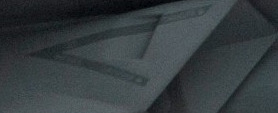
3 - On the front of the fuel drop tank, some squadrons embellish their tanks with squadron-specific markings. Not all squadrons do this, but some do. Some go small like the snake seen in the main image, while others go more bold. Again, not a major deal breaker: research the squadron and you’ll see if they do it on their drops or not.

And now onto the tail and rear. We’ll work top to bottom here:

1 - Modex. We covered this on the nose section, so we’ll move on.
2 - Squadron Marking. Alongside the identifier on the spine, all aircraft will have “artwork” that denotes their squadron, and it’s typically pulled from the squadron’s insignia patch. This is where you have a lot of variation, as some squadrons are low-key in their marking type while others are a lot more flashy, even if they are subdued in colour. Some squadron’s tail markings are very distinct and have the accompanying notoriety. Above is a sidewinder snake, for the eponymous VFA-86 “Sidewinders”. A few more examples are below:
VFA-143 Pukin’ Dogs
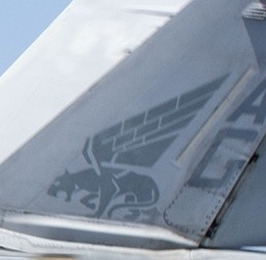
VFA-41 Black Aces

VFA-151 Vigilantes

3 - Air Wing Identifier. This is the two-letter code seen beside the squadron identifier, and like the alphabetic squadron code seen on the spines, these letters also have meaning. They’re used to denote which air wing the aircraft is currently assigned to, which is why if you look at a squadron’s aircraft pictures across a long period of time you’ll note that these letters (and the modex numbers) change.
A/N refer to the fleet, A being Atlantic Fleet and N for the Pacific Fleet. The second code relates to the carrier the air wing is embarked upon.
Using the pictures I’ve posted above as reference, here are some examples:
AC - Air Wing Three, USS Dwight D Eisenhower (Atlantic Fleet)
AG - Air Wing Seven, USS George H.W. Bush (Atlantic Fleet)
NH - Air Wing Eleven, USS Theodore Roosevelt (Pacific Fleet)
NG - Air Wing Nine, USS Abraham Lincoln (Pacific Fleet).
4 - Carrier Assignment. Below the tail in small print is the name of the carrier that squadron (and air wing) is embarked upon. Pretty self explanatory.
5 - NAVY. Branch marking, also self explanatory. Note that USMC aircraft will have MARINES printed there instead.
6 - Serial Number. Located under the rear elevator fin, this six digit number is the aircraft’s unique serial number, which remains unchanged even if the aircraft itself is transferred to another squadron.
I hope I haven’t lost you yet, as I’ve got a few more things to quickly point out.
You may notice in your own research that some aircraft aren’t painted in low-vis markings like the ones I’ve shown here, and that some are fully decorated out. These are typically the “CAG” and “CO” aircraft, painted as such to foster esprit de corps within the squadron and air wing. CAG aircraft (given modex numbers of x00) are the aircraft “reserved” for the Commander of the Air Group (Air wing commander, essentially). Likewise, the “CO” birds are painted in a less-lively livery and given modex numbers of x01, and are reserved for the “Commanding Officer” of the squadron. Here are some examples:
VFA-103 Jolly Rogers CAG Bird

VFA-41 Black Aces CAG Bird
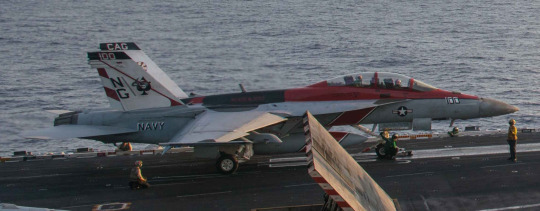
VFA-2 Bounty Hunters CAG Bird

VFA-11 Red Rippers CAG and CO aircraft
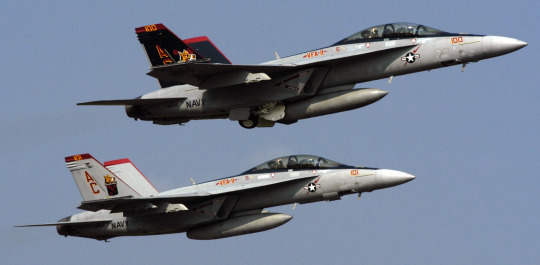
And last thing. Those off-yellow lines that you can see on the nose, vertical tail, and above the NAVY marking? They’re formation markers, and can be activated to glow at different brightness depending on situation requirements. Here’s how it looks at night/low light:

Hope this has helped educate my budding writers and artists! Any questions, don’t hesitate to leave a note, reblog with an @, or send me an ask.
74 notes
·
View notes
Text

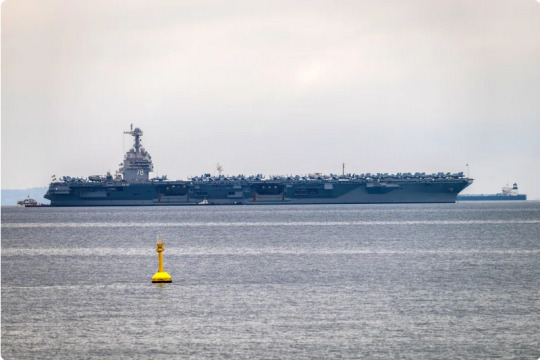

‘Biggest, baddest warship’
The USS Gerald Ford is the Navy’s newest and most advanced aircraft carrier.
Commissioned in 2017, the ship is named after former President
, who served in the Navy during World War II. Measuring more than 1,100 feet long, 255 feet wide and 250 feet high, the $18 billion vessel is the largest warship ever built.
The 5-acre flight deck can carry up to 90 aircraft, including F-35 fighter jets, The carrier’s size allows it to support up to 90 aircraft, including F-35s, F/A-18 Super Hornets, E-2D Advanced Hawkeyes, EA-18G Growlers, SH-60/MH-60 Seahawk helicopters and other aerial weaponry.
“It's designed to get more fighter planes in the sky in less time and to be ready to incorporate unmanned aircraft into its air wing,” the Associated Press noted at its christening in 2013.
The ship is powered by two state-of-the-art nuclear reactors and can reach a top speed of over 34 miles per hour.
The Ford is currently on its first combat deployment, with about 4,500 crew members on board.
2 notes
·
View notes
Text

Growler coming around during a demo at Oshkosh
#USN#Navy#Boeing#EA-18#EA-18G#Growler#Electronic Warfare Aircraft#Military aviation#F-18 Demo#airshow#Oshkosh#afterburner#vapor#airplane#plane#jet
95 notes
·
View notes
Text

VAQ 209 EA-18G Growler. (MC1 Juan Sua)
@kadonkey via X
105 notes
·
View notes
Video
VAQ-129 EA-18G by David G. Schultz
Via Flickr:
Growler Airshow Team
#08-12-2023#Abbotsford International Airshow#Airplane#D850#Through The Lens Revalations#aircraft#nikon#nikonsigma#outdoor#sigma#sigma 150-600 contemporary#vehicle#VAQ-129#EA-18G#Growler Airshow Team#Jet Fighter#US Navy#NAS Whidbey Island WA#as beautiful as you want#Best Of Nikon#Canada#Damn Cool Photographers in the WORLD#David Schultz Photography#FX#Motion Blur#Nikon FX Showcase#Nikonians#speed#Unlimited Photos#Your-best-of-today
1 note
·
View note

